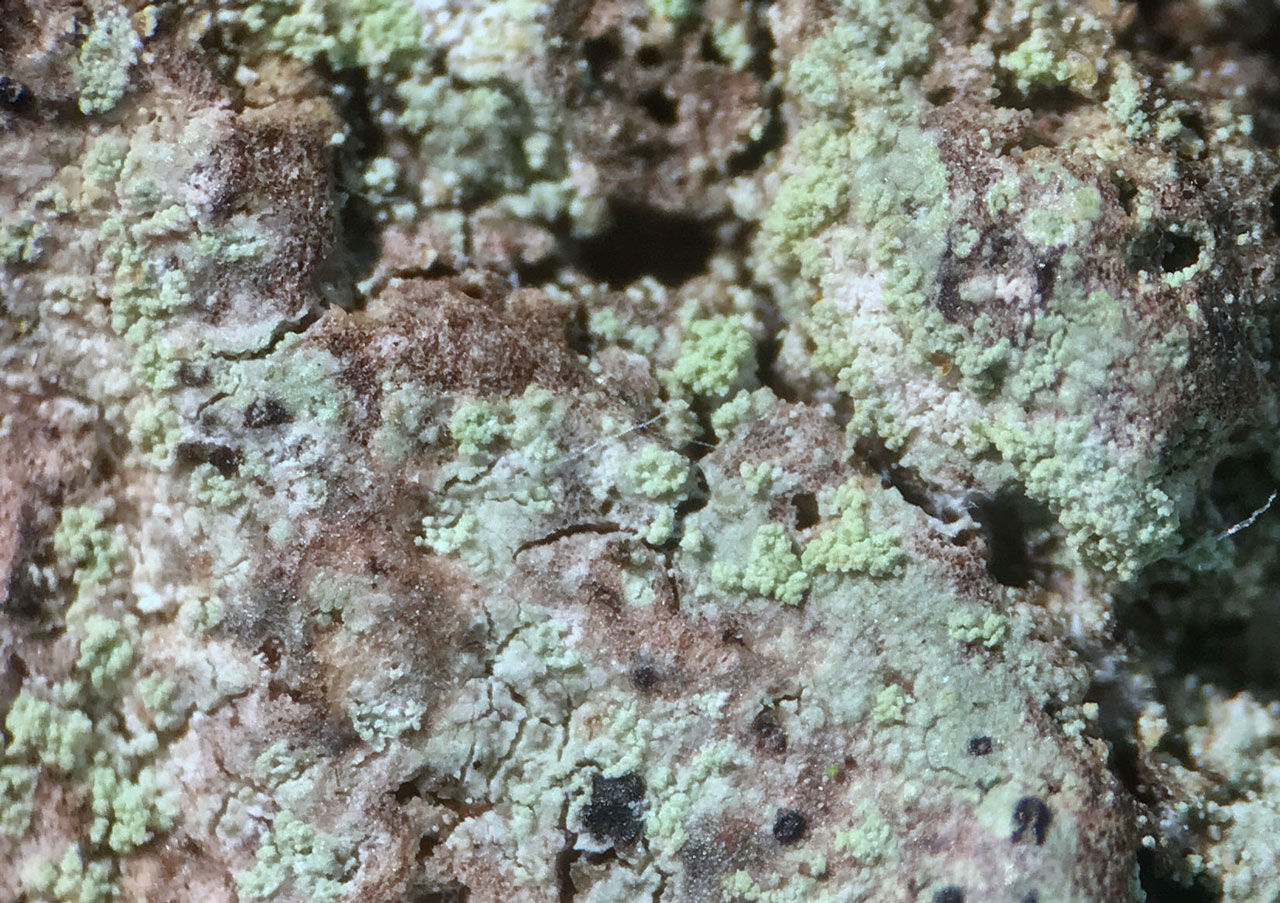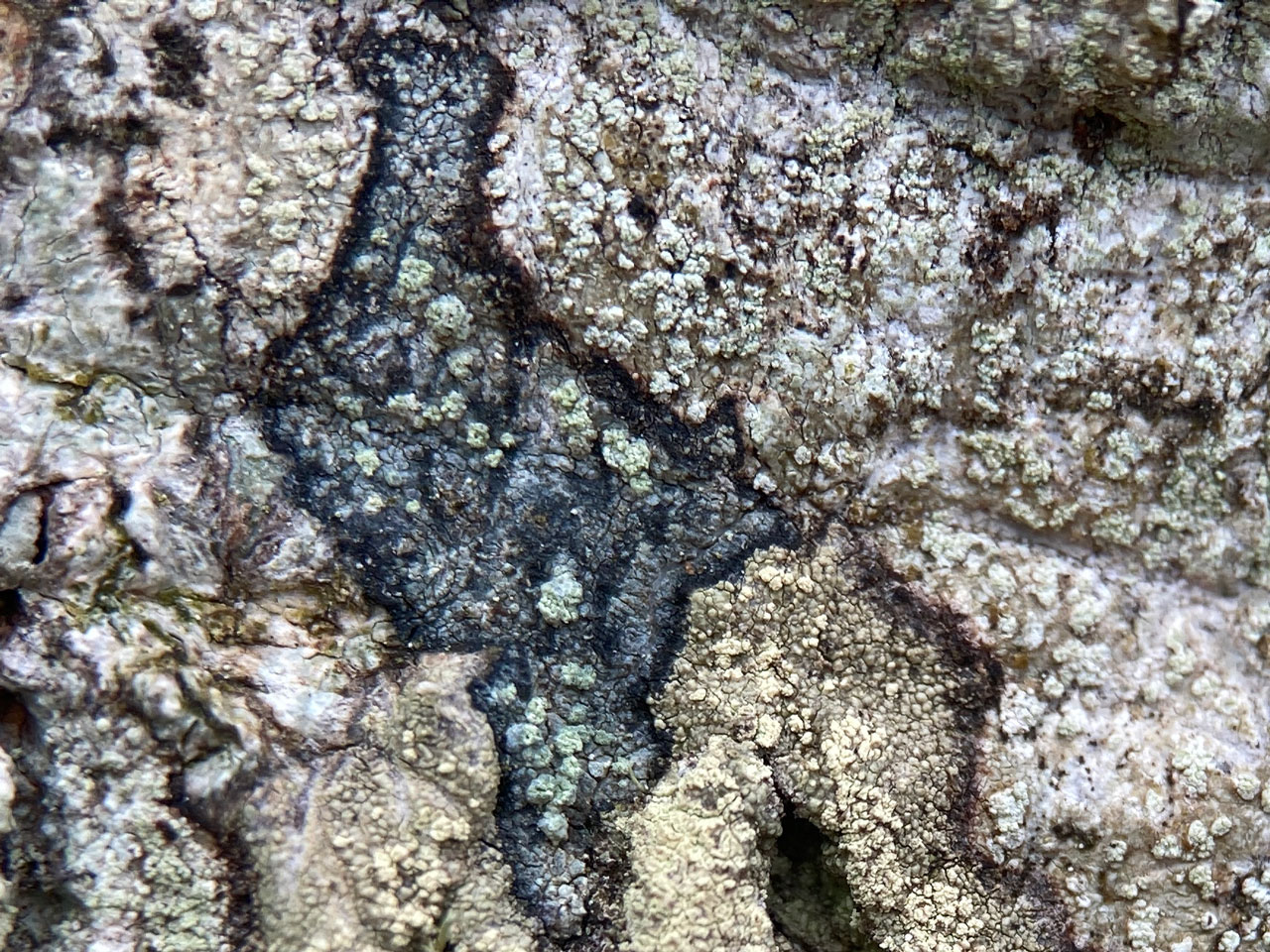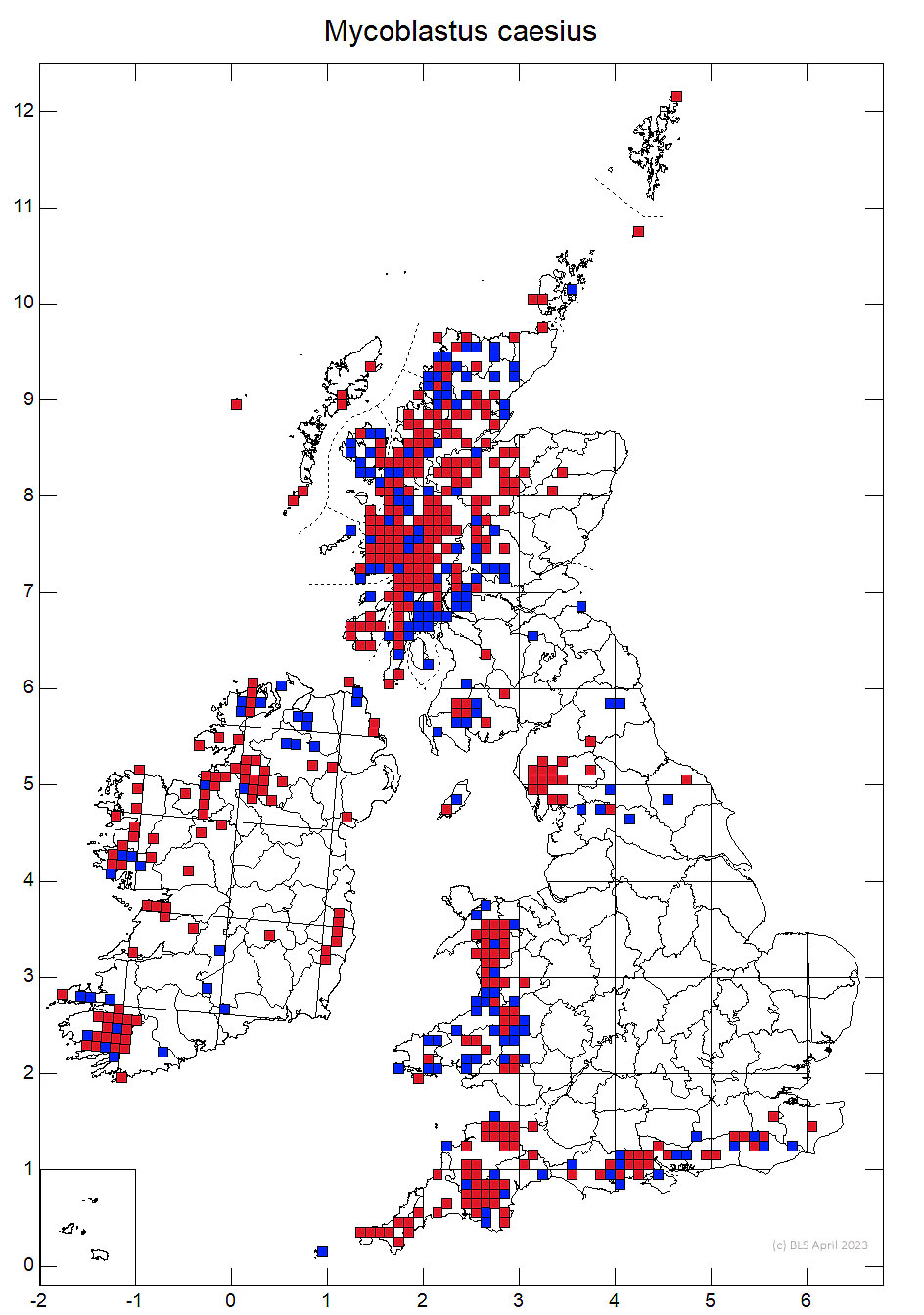A sterile sorediate crust found on acid bark and wood, which is widespread in humid oceanic woods and also found on woodland rocks. It has a pale grey thallus with numerous to confluent soralia that are whitish-yellow to bluish grey. The blue-grey prothallus can often be prominent, but can also be inapparent. The most distinctive feature is the combination of the sorediate thallus with an extraordinarily bright white UV florescence and no other spot tests. A fun thing to do at the end of a winter days surveying in an oceanic woodland as the light fades is to shine a good UV light at the trees; Mycoblastus caesius will light up from many meters way!
Thallus effuse and wide-spreading, or forming small, poorly delimited patches amongst other species, thin, ± continuous, pale grey and rather scabrid or (especially on smooth bark) with scattered areoles on a dark thin blue-grey prothallus; soralia numerous, efflorescent, discrete, 0.2–1 mm diam., or often confluent, whitish to bluish grey; soredia 30–80 (–100) µm diam., external hyphae often blue-grey, N+ red. Apothecia and pycnidia unknown. Thallus, medulla and soralia C–, K–, KC–, Pd–, UV+ very bright white (perlatolic acid).
On smooth bark, easily recognised when well-developed by the conspicuous, uniform blue-grey colour of the thallus and its soralia; paler morphs however are common and are often confused with Loxospora chloropolia or Violella fucata which have K+ bright yellow or yellow-brown, Pd+ yellow-orange or red, UV– soralia. Buellia griseovirens often has a bluish tinge, but its soralia are smaller, excavate, K+ and Pd+ yellow or reddish and UV–. Fuscidea pusilla, Hertelidea botryosa and Ropalospora viridis all occur on acid bark or wood and have poorly delimited soralia with identical reactions, due to the presence of divaricatic or perlatolic acids, however none of these species has a blue-grey pigment in the prothallus or soralia and all have very different thalli. Lecidea nylanderi, however, does have bluish-grey soralia and can have a dark prothallus, but has divaricatic acid and its UV florescence is very much weaker. The recent discovered Chicitaea cristinae appears problematic to separate form pale morphs of M. caesius other than by sequencing, as it has the same chemistry and appears very similar morphologically. Comparisons of fresh specimens are required to clarify any field usable differences.
Sequence data are currently lacking for M. caesius, so its relationships are not completely clear [since sequenced, Vondrák et al (2023), and these show it does not belong in the Mycoblastus s. str., it should be placed in Lecanorales, but its family affiliation is not clear]. The presence of perlatolic acid suggests a link to the Mycoblastus dissimulans group, a primarily southern-hemisphere assemblage with similarities to Japewia that Kantvilas (2009) suggested might merit a separate genus.
On smooth and rough acid bark and wood, also on shaded siliceous rocks (vertical surfaces), mainly in woodland where it is probably much over-looked.

Common in the west, very rare elsewhere. N. & W. Britain and Ireland, extending locally to S. and S.E. England.
Cannon, P., Aptroot, A., Coppins, B., Orange, A., Sanderson, N. & Simkin, J. (2022). Lecanorales: Tephromelataceae, including the genera Calvitimela, Mycoblastus, Tephromela and Violella. Revisions of British and Irish Lichens 29: 1-10.
Kantvilas, G. (2009). The genus Mycoblastus in the cool temperate Southern Hemisphere, with special reference to Tasmania. Lichenologist 41: 151-178
Vondrák, J., Svoboda, S., Košnar. J., Malíček, J., Jaroslav Šoun, J., Frolov, I., Svensson, M., Novotný, P. & Palice, Z. (2023) Martin7: a reference database of DNA barcodes for European epiphytic lichens and its taxonomic implications. Preslia 95: 311–345
Text by Neil A. Sanderson based on Cannon et al (2022)



